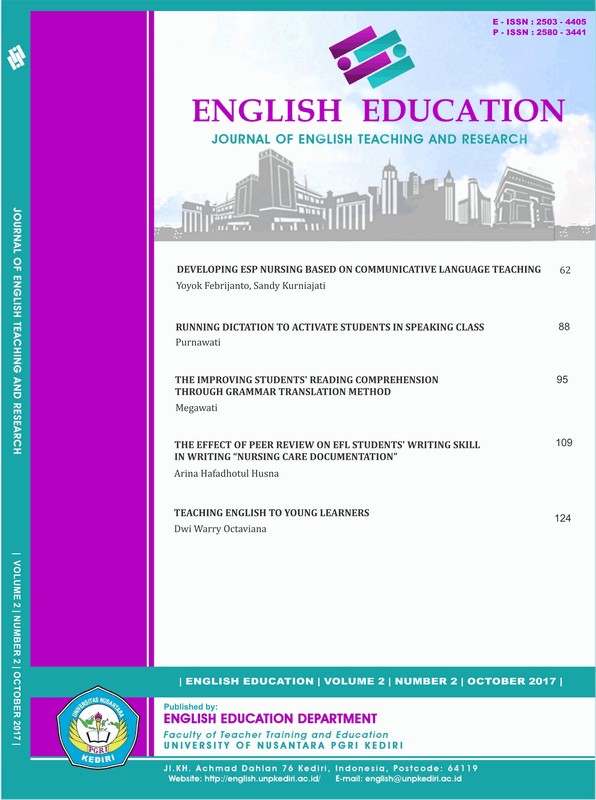TEACHING ENGLISH TO YOUNG LEARNERS
DOI:
https://doi.org/10.29407/jetar.v2i2.808Abstract
ABSTRACT
Learning English is vital skills that will help children achieve their full potential in later life. If they have the right techniques, they can learn English quickly and effectively. So, it is important that they have to learn English which is practical and useful. Learning should not be stressful for children. It should be fun and stimulating. Their studies should make reading, listening, and speaking in English come naturally. As their confidence develops, they will learn more and use English to a more challenging level. This paper discusses about some resources for EFL teachers to facilitate the children in learning a foreign language. These are purposed for them to be able to teach effectively with the fun and variety that children need. The last part, this paper tells about how to ensure the children learn English using simple techniques that will absolutely make the teachers’ job more fun and satisfying. Also, it will be expected that the teachers will have enough fresh ideas to be the most inspiring teachers that they possibly can.
Downloads
Downloads
Published
Issue
Section
License
Authors who publish with this journal agree to the following terms:
- Copyright on any article is retained by the author(s).
- The author grants the journal, the right of first publication with the work simultaneously licensed under a Creative Commons Attribution License that allows others to share the work with an acknowledgment of the work’s authorship and initial publication in this journal.
- Authors are able to enter into separate, additional contractual arrangements for the non-exclusive distribution of the journal’s published version of the work (e.g., post it to an institutional repository or publish it in a book), with an acknowledgment of its initial publication in this journal.
- Authors are permitted and encouraged to post their work online (e.g., in institutional repositories or on their website) prior to and during the submission process, as it can lead to productive exchanges, as well as earlier and greater citation of published work.
- The article and any associated published material is distributed under the Creative Commons Attribution-ShareAlike 4.0 International License








 Article template
Article template



